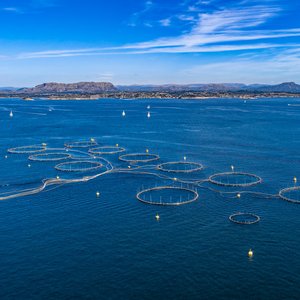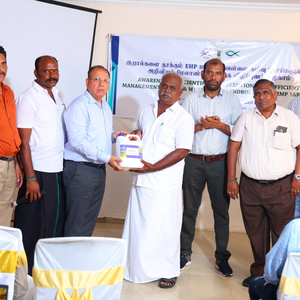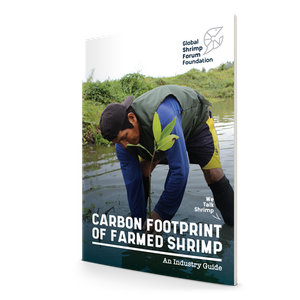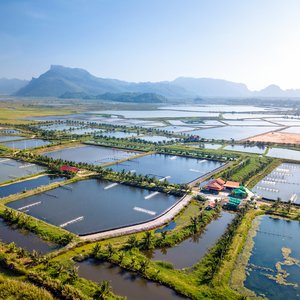Investors play a crucial role in turning startup ideas into reality by providing essential financial support. However, their contribution goes far beyond funding – they also offer valuable insights, mentorship, and strategic connections that can drive a business toward long-term success.
As a relatively young industry, aquaculture requires continuous innovation to keep pace with its rapid growth and meet the rising global demand for seafood. New technologies and solutions are essential to making aquaculture more efficient, sustainable, and scalable – and this is where investors can make a significant impact, as Rabobank has been doing.
“Seafood is an increasingly important source of protein to feed the growing population and Rabobank is one of the premier lenders to the industry worldwide. We bank the majority of salmon feed and farming companies, and service most major shrimp producers. Supporting the growth of this vitally important industry through Rabo Investments, and more specifically Rabo Ventures, which focuses on early-stage investments, was a logical next step for us as a cooperative bank committed to growing a better world together,” Jeroen van der Staay, executive director Rabo Ventures, told Aquafeed.com in a recent interview.
Investments in aquaculture
Rabo Ventures has already invested in ViAqua Therapeutics, a startup developing RNA-based treatments that target major viral diseases in shrimp; MiAlgae, a producer of microalgae-based omega-3 (DHA); the insect company Protix; and The Kingfish Company, a yellowtail kingfish RAS farmer.
What attracted Rabobank to aquaculture and aquafeeds as an investment opportunity compared to other industries? “A few key factors stand out for us about aquaculture. First, there’s clear underlying market growth, as aquaculture has now overtaken wild-caught seafood as the main source of marine-based protein, and the global population continues to expand. Second, seafood is inherently healthy and has a lower environmental impact than many other protein sources. Finally, aquaculture is a relatively young industry with strong innovation potential, particularly in addressing major environmental and economic challenges. We expect the sector to take significant steps forward in the near future,” van der Staay stated.
For example, in the case of ViAqua, the shrimp sector was losing 20-30% of global production due to disease, with no viable solution in place. This, combined with the fact that the shrimp industry has roughly doubled in production over the past decade, made it a compelling investment. “We looked at the various efforts to solve this issue and started searching for solutions that could overcome historical challenges in immunizing shrimp against disease. In ViAqua, we found a platform that could address multiple diseases through feed-based solutions,” van der Staay explained.
Challenges in aquaculture investment
But it is not all smooth sailing and investing in aquaculture has its own challenges. “One of the main hurdles we have faced in the sector is the limited number of other early-stage investors in the sector. Many food system investors and generalists still see aquaculture innovation as a niche market. Given the risk profile of early-stage ventures, venture capital investors typically prefer to invest as a syndicate, but for that, there needs to be a certain critical mass,” van der Staay said.
“Market fluctuations primarily in the price of inputs, which impact the value proposition of environmentally friendly substitutes, have also proved challenging,” he said.
Unique risks in the aquaculture industry
Aquaculture is a relatively young, rapidly growing and technology-driven industry. “This combination results in an elevated risk profile, often leading to significant volatility in terms of both production volume and price,” van der Staay said.
Another unique risk is disease management. “Although aquaculture revolves around rearing animals in controlled environments, it remains vulnerable to disease outbreaks that can wipe out a significant portion of production. The industry is also still reliant on wild-caught fish for fishmeal and fish oil, each of which presents its own sustainability issue,” van der Staay stated.
Additionally, the risk of farmed fish escaping from net pens and interbreeding with wild populations poses a serious concern. “The hybridized offspring have lower survival rates than wild salmon, and interbreeding has been shown to contribute to population decline and collapse” van der Staay said.
Investment opportunities
The diversity of species, regions, production methods, and technologies within aquaculture highlights the sector’s vast investment potential over the next 5-10 years.
“Any solution that enables the industry to increase output in a safe, responsible and sustainable way should be considered as a serious investment opportunity. Innovations in monitoring and control systems, disease mitigation and prevention, biological risk resilience, and fish welfare, such as post-smolt systems, vaccines, nano-bubbles, flow-through systems, off-shore farms and RAS, all have a role to play. Additionally, achieving 100% inclusion of sustainable ingredients in aqua nutrition is another key target,” van der Staay said.
However, the industry must position itself as an attractive field for investors. “To become a more attractive industry, the sector needs a clear, ambitious and widely shared vision for the future, one that outlines its role in closing the global protein gap and how it plans to do so in a safe, responsible, and sustainable manner.”
According to van der Staay, this starts with a more unified and proactive approach to working with governments, local communities, and indigenous groups on issues such as environmental stewardship, community support, and long-term industry sustainability. “Ensuring a license to operate for the future requires strong cooperation among stakeholders,” he emphasized.
Cooperation along the value chain is also key to accelerating innovation, whether through joint funding of R&D projects (e.g., novel ingredient inclusion, disease mitigation, or monitoring and control technologies) or through sector-wide implementation. “The industry’s most influential players must take the lead in driving these initiatives, as reality shows that smaller players in the value chain often lack the resources to do so,” van der Staay said.
Having already invested in the field, van der Staay suggests that aquaculture should be treated as its own distinct investment class, much like (yet significantly different from) fintech. “Aquaculture operates in the physical (and not in the virtual) world, meaning capital expenditure can be significantly higher (depending on the technology) and the adoption speeds lower. However, this doesn’t necessarily mean that returns need to be lower. Food is one of the most fundamental human needs, and I would argue that innovation in this space is both more necessary and more rewarding than in most other industries,” he said.
The future
Van der Staay envisions a future where the aquaculture industry collaborates to solve its biggest challenges, such as disease, monitoring and control, and sustainable feed by eliminating its reliance on wild-caught ingredients.
“Aquaculture already provides a very nutritious, low-impact, and healthy protein source. But if we can together address the issues the industry faces today, we can unlock the full potential of ‘zero gravity farming’”, van der Staay concluded.










